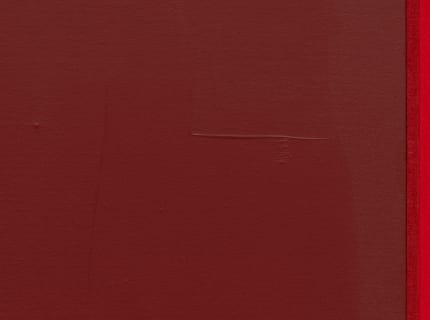Currently situated – or hidden – throughout the landscape of the Clark’s 140 acres of forest and field are the works of half a dozen female artists. One could see this outdoor exhibition, guest curated by Molly Epstein and Abigail Ross Goodman, as particularly apt for this moment, although Ground/work was not intended as a response to the pandemic. Meant to open in late spring, the showcase was in fact pushed back repeatedly by virus related difficulties until finally “opening” in the first week of October.
I put the word “opening” in quotes only because many of these works have actually been installed for quite some time now, with the recent arrival of Hague Yang’s Migratory DMZ Birds on Asymmetric Lens completing the showcase. Yet, at the same time, each of these installations seems to create an intimate experience with its specific location, whether that be in the woods or flush against a wall. With this in mind, each piece operates on its own in a way, independent of any other piece or even an opening date. The affect of these six works, amplified by their specifically selected locales, is a welcome addition to the Clark’s continuing contemporary endeavors.
Each of these six artists – Kelly Akashi, Nairy Baghramian, Jennie C. Jones, Eva LeWitt, Analia Saban, and Haegue Yang – began their work with a visit to the museum to select a site for their piece. With the knowledge that the exhibition would run for the next year, each artist was also faced with the question of how to incorporate the transience of the landscape. How these pieces will interact with the winter, spring and summer months, we have yet to see; the current autumn foliage, however, will be a tough act to follow.
Jennie C. Jones’ These (Mournful) Shores is the closest piece to the Clark Center itself, although it could easily be missed by a passerby. The work attaches to the outer edge of the granite wall that borders the reflecting pool, appearing as almost a natural extension of the wall itself. A minimalist interpretation of an Aeolian Harp, also known as the wind harp, Jones’ piece is activated by wind and inspired by the turbulent weather depicted in Homer’s iconic Eastern Point and West Point, Prout’s Neck. The harp’s cherry wood innards also reference the trans-Atlantic trade which not only delivered such commodities but the thousands of enslaved people who produced them. Both sonically and aesthetically haunting, These (Mournful) Shores is a powerful first foray into outdoor art for Jones.
...
Read full article at williamsrecord.com.

